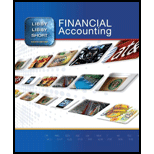
1.
Compute the amount of dividends, in total and per share, that would be payable to each class of stockholder’s for each case.
1.
Explanation of Solution
Preferred stock:
The stock that provides a fixed amount of return (dividend) to its stockholder before paying dividends to common stockholders is referred as preferred stock.
Common stock:
These are the ordinary shares that a corporation issues to the investors in order to raise funds. In return, the investors receive a share of profit from the profits earned by the corporation in the form of dividend.
Retained earnings are the portion of earnings kept by the business for the purpose of reinvestments, payment of debts, or for future growth.
Cash dividends:
The amount of cash provided by a corporation out of its distributable profits to its shareholders as a return for the amount invested by them is referred as cash dividends.
Compute the amount of dividends, in total and per share, that would be payable to each class of stockholder’s for each case:
Case A: Preferred is noncumulative and the total amount of all dividends is $25,000.
| Particulars |
Preferred Stock of 21,000 shares (Amount in $) |
Common Stock of 500,000 shares (Amount in $) |
Total (Amount in $) |
| 16,800 | 16,800 | ||
| Balance carried to common stock | (1)8,200 | 8,200 | |
| 16,800 | 8,200 | 25,000 | |
| Per share value | (2) 0.80 | (3) 0.016 |
(Table 1)
Working Notes:
Case B: Preferred is cumulative and the total amount of all dividends is $25,000.
| Particulars |
Preferred Stock of 21,000 shares (Amount in $) |
Common Stock of 500,000 shares (Amount in $) |
Total (Amount in $) |
| Preferred shares: | |||
| Arrears | 25,000 | 0 | 25,000 |
| Current year | 0 | 0 | 0 |
| 25,000 | 0 | 25,000 | |
| Per share value | (4) 1.19 | 0 |
(Table 2)
Working Notes:
Case C: Preferred is cumulative and the total amount of all dividends is $75,000.
| Particulars |
Preferred Stock of 8,000 shares (Amount in $) |
Common Stock of 35,000 shares (Amount in $) |
Total (Amount in $) |
| Preferred shares: | |||
| Arrears | 33,600 | 0 | 33,600 |
| Current year | 16,800 | 0 | 16,800 |
| Balance of common stock | 0 | 24,600 | 24,600 |
| 50,400 | (5) 24,600 | 75,000 | |
| Per share value | (6) 2.40 | (7)0.049 |
(Table 3)
Working Notes:
2.
Explain the manner by which stock dividend will be compared to case C if company issues a 40% common stock dividend on the outstanding shares and if the market value per share is $50.
2.
Explanation of Solution
| Schedule of Comparative Differences | ||
| Item | Amount of Dollar Increase (Decrease) | |
| Cash Dividend – Case C | Stock Dividend | |
| Assets | There is a decrease in the value of cash by $75,000. | No change |
| Liabilities | The liabilities increase by $75,000 when cash dividend is declared and it decreases during the payment of cash dividend. | No change |
| Retained earnings of the company reduce by $75,000. |
Stockholder’s equity will not change on declaration of stock dividend. The retained value gets reduced due to declaration of dividend and there will be equal increase in the value of common stock | |
(Table 4)
Want to see more full solutions like this?
Chapter 11 Solutions
Financial Accounting, 8th Edition
- I need assistance with this general accounting question using appropriate principles.arrow_forwardNonearrow_forwardXavi Enterprises has provided the following projections for 2025: The company's fixed costs are expected to be $194,000. The selling price per unit is $16, while the variable cost per unit is $6. The company aims to earn a net income of $82,000 during 2025. The required sales units to meet the target net income during 2025 is _ (rounded up to the nearest whole number).arrow_forward
- Kelvin Apparel uses straight-line depreciation for financial statement reporting and MACRS for income tax reporting. Four years after its purchase, one of Kelvin's warehouses has a carrying value of $520,000 and a tax basis of $410,000. There were no other temporary differences and no permanent differences. Taxable income was $5.5 million and Kelvin's tax rate is 35%. What is the deferred tax liability to be reported in the balance sheet?arrow_forwardDo fast answer of this general accounting questionarrow_forward5 POINTSarrow_forward

 AccountingAccountingISBN:9781337272094Author:WARREN, Carl S., Reeve, James M., Duchac, Jonathan E.Publisher:Cengage Learning,
AccountingAccountingISBN:9781337272094Author:WARREN, Carl S., Reeve, James M., Duchac, Jonathan E.Publisher:Cengage Learning, Accounting Information SystemsAccountingISBN:9781337619202Author:Hall, James A.Publisher:Cengage Learning,
Accounting Information SystemsAccountingISBN:9781337619202Author:Hall, James A.Publisher:Cengage Learning, Horngren's Cost Accounting: A Managerial Emphasis...AccountingISBN:9780134475585Author:Srikant M. Datar, Madhav V. RajanPublisher:PEARSON
Horngren's Cost Accounting: A Managerial Emphasis...AccountingISBN:9780134475585Author:Srikant M. Datar, Madhav V. RajanPublisher:PEARSON Intermediate AccountingAccountingISBN:9781259722660Author:J. David Spiceland, Mark W. Nelson, Wayne M ThomasPublisher:McGraw-Hill Education
Intermediate AccountingAccountingISBN:9781259722660Author:J. David Spiceland, Mark W. Nelson, Wayne M ThomasPublisher:McGraw-Hill Education Financial and Managerial AccountingAccountingISBN:9781259726705Author:John J Wild, Ken W. Shaw, Barbara Chiappetta Fundamental Accounting PrinciplesPublisher:McGraw-Hill Education
Financial and Managerial AccountingAccountingISBN:9781259726705Author:John J Wild, Ken W. Shaw, Barbara Chiappetta Fundamental Accounting PrinciplesPublisher:McGraw-Hill Education





